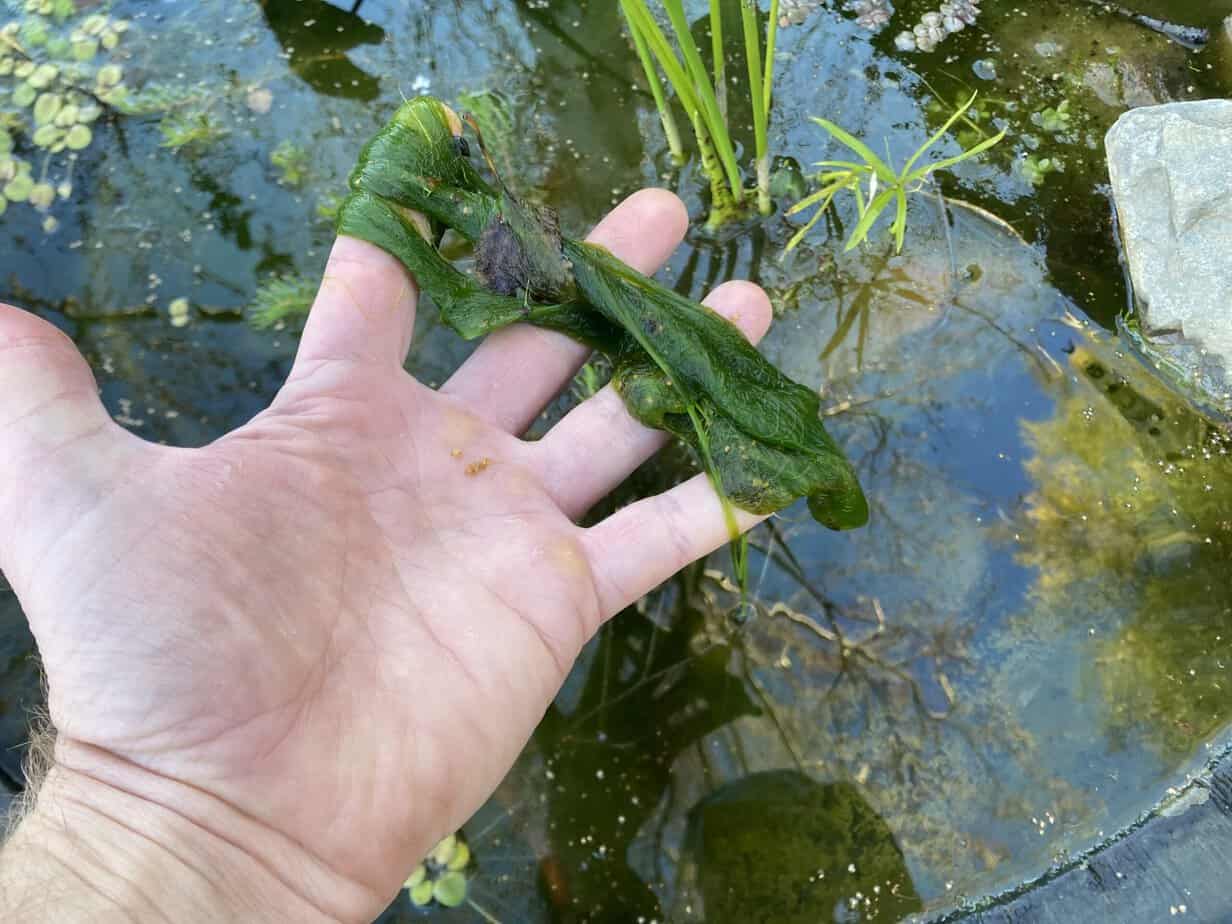When it comes to dealing with blanket weed or string algae, the maturity of your pond plays a significant role. However there are, many factors contribute to blanket weed growth.
In this post, I’ll briefly discuss some of the most common reasons for algae overtaking your pond and offer practical solutions. If you prefer video format you can watch my video below.
The Basics: Nutrients and Sunlight
Algae like all plants require nutrients and sunlight to thrive. If we can reduce nutrients or sunlight we can help reduce the amount of algae in our ponds.
Quick tips for reducing nutrients in your pond
The most common nutrients in ponds are phosphates and nitrogen. Here are several ways to reduce those nutrient levels:
Low Fish Numbers and Feeding: Fewer fish and minimal feeding reduce the nutrient load on your pond’s filter system, leading to less nitrogen. If you are going to feed use a good quality food that mimics your fishes natural diet.
Optimized Filtration: Biological filters process ammonia and nitrite, leaving nitrate. I love to use bog filters, which complete the nitrogen cycle, leaving no detectable nitrate. If you want to learn more about bog filters you can read this article.
Mechanical Filters: These physically remove waste from the pond. Options include sponges, drum filters, surface or protein skimmers. You can find various different filters by using the helpful products page.
Plants: Plants can consume phosphates and nitrogen, competing with algae and helping to starve it out. You’ll want to use a variety of different plants.
Water Changes: Regular water changes dilute nutrient levels. Rainwater is ideal, but treated tap water works too, if you change a lot of water all at once and use tap water to top up, you’ll want to use a water conditioner (Amazon link) to make it safe.
Phosphate Binders: If phosphate is a problem, these products can lock up phosphates for later use as garden fertiliser. You can find links to phosphate binders and other water treatment options here.
Sunlight Management
Clear water allows sunlight to penetrate, promoting algae growth. Here are some methods to manage sunlight:
Shade: Plant trees or use shade sails to limit sunlight exposure.
Pond Dye: This darkens the water, reducing light penetration. However, it can result in an unnatural water color.
Natural Tannins: Organic materials like logs and leaves release tannins that darken water naturally, limiting light penetration.
Floating plants: There’s all kinds of floating plants that will help shade the water in your pond.
Water Chemistry
Stable water chemistry is very important for algae management and overall pond health. Some of the key parameters include:
pH Levels: The acidity or alkalinity of your water.
Nitrogen Levels: Including ammonia, nitrites, and nitrates.
General Hardness (GH) and Carbonate Hardness (KH): These impact overall water chemistry and stability.
I find each pond will find its balance over time. I focus on creating a stable ecosystem rather than constantly adjusting water chemistry.
Enhancing the Ecosystem
A healthy food chain helps manage algae. Algae and biofilm on rocks and plants are part of the food chain, supporting small organisms and bacteria, which in turn feed snails, invertebrates, and fish.
- Algae-Eating Animals: Snails and certain fish can help control algae.
- Kickstarting the Food Chain: Products like Nualgai and Diatomix encourage diatom growth, forming the base of the food chain.
You can watch the video below or you might like to read this article.
Manual Removal and Long-Term Solutions
Manually removing algae is effective because it removes the nutrients algae used to grow. Avoid products that kill algae without removing it, as they leave nutrients behind, leading to regrowth.
Sludge Removal: In older ponds, remove deep sediment layers to reduce nutrient buildup. A simple pond net or pond vacuum can really be useful in small backyard ponds.
Bacteria Products: These can help consume sludge but they require regular use and patience.
Conclusion
Addressing blanket weed requires a combination of good filtration, creating a robust ecosystem, regular maintenance, and patience. By understanding the factors contributing to algae growth and implementing these strategies, you can maintain a healthy and beautiful pond.
I do have a downloadable formula pdf that contains the formulas I use when I build my ponds and lots of other articles on this website, and of course my YouTube channel.
I hope this article and accompanying resources are helpful. Thanks for reading, C ya!

